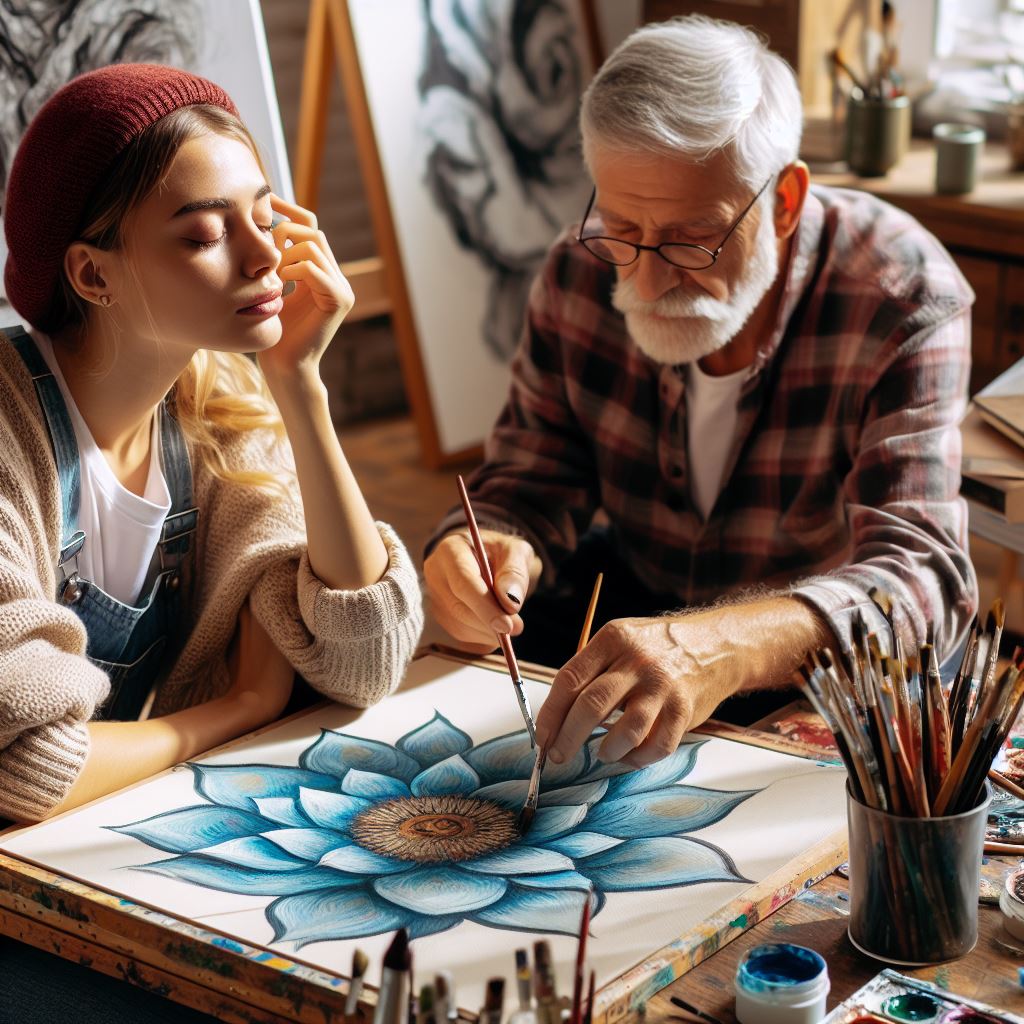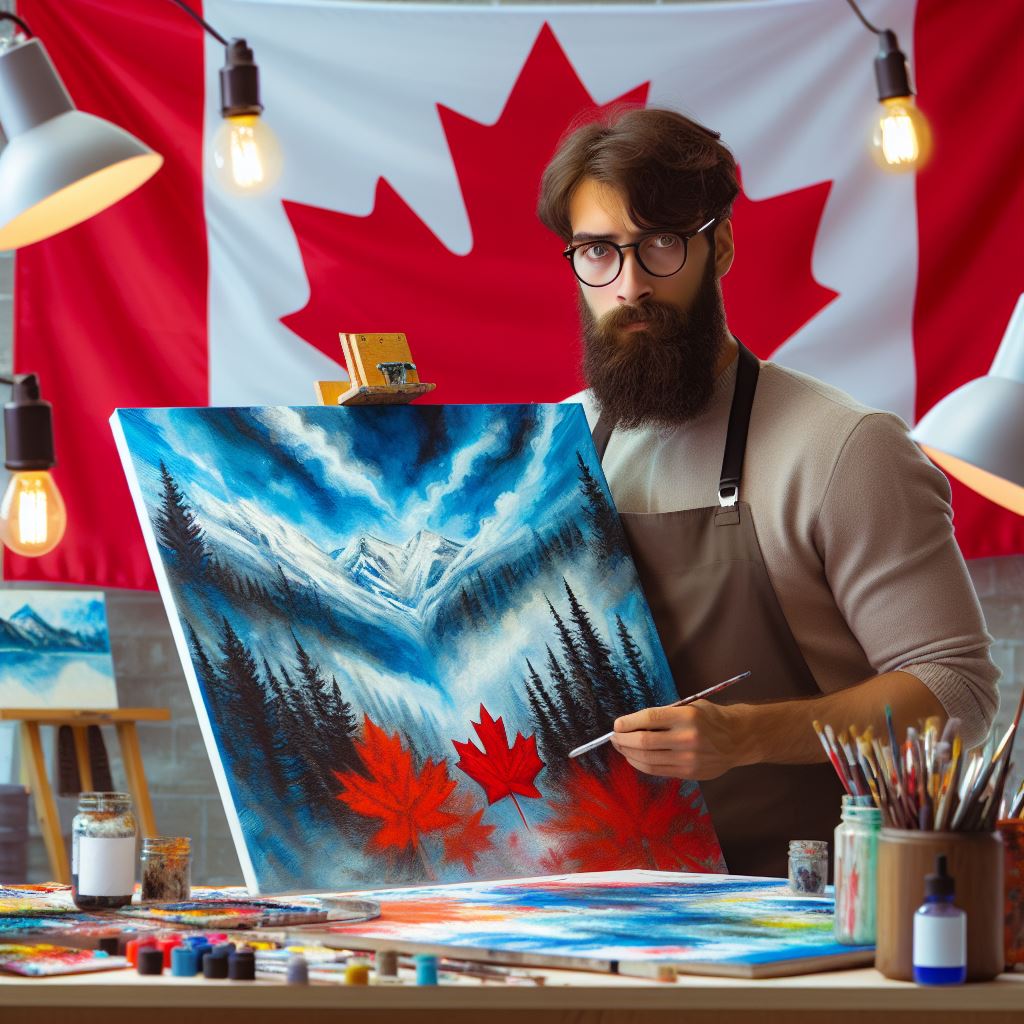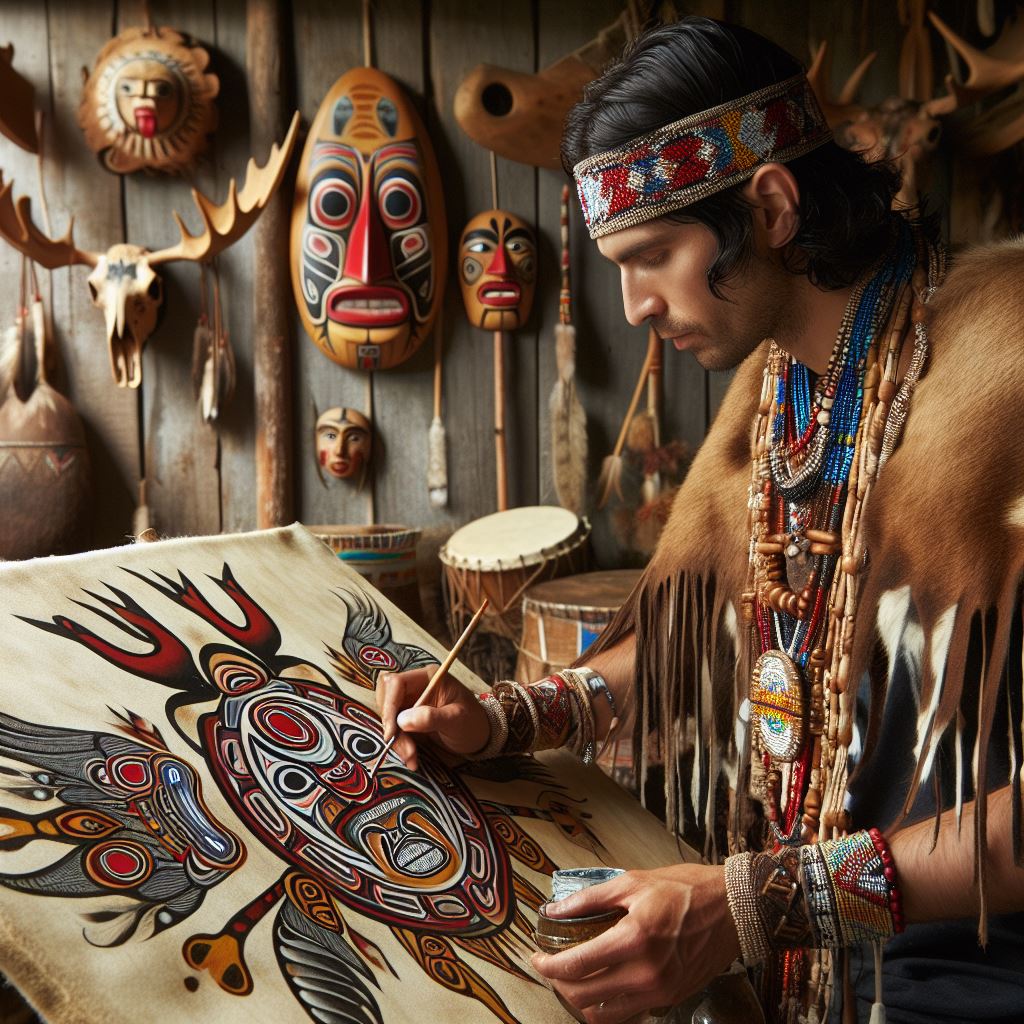Understanding Camera Functions and Settings
Importance of Camera Knowledge
Every aspiring photographer must understand camera functions.
This knowledge allows for greater creative expression.
Additionally, it enables better control over image outcomes.
Key Camera Functions
Aperture influences the amount of light entering the camera.
It also affects depth of field in your photos.
Shutter speed determines how long the sensor is exposed to light.
Moreover, it helps freeze action or create motion blur.
ISO settings control the camera’s sensitivity to light.
Higher ISO values can help in low-light situations.
Understanding Exposure Triangle
The exposure triangle includes aperture, shutter speed, and ISO.
Balancing these three elements is crucial for proper exposure.
Notably, changing one affects the others.
Thus, mastering this balance is key for photographers.
Utilizing Camera Modes
Most cameras offer various shooting modes.
These modes include manual, aperture priority, and shutter priority.
Each mode serves a different purpose and creative vision.
By experimenting, you can discover which mode suits you best.
Focusing Techniques
Understanding focus is vital in photography.
Manual focus provides precision in complex scenarios.
Auto focus, on the other hand, is efficient for quick shots.
Learning how to switch between modes enhances flexibility.
Leveraging Composition Settings
Composition settings improve visual storytelling in photographs.
Using the rule of thirds helps create balanced images.
Simultaneously, leading lines draw viewers’ attention to subjects.
Experimenting with different compositions can yield unique results.
Unlock Your Career Potential
Visualize a clear path to success with our tailored Career Consulting service. Personalized insights in just 1-3 days.
Get StartedMastering Composition Techniques
Understanding the Basics of Composition
Composition involves arranging elements within your frame effectively.
Knowing the basics is crucial for any aspiring photographer.
Start by learning about the rule of thirds.
This technique divides the frame into nine equal parts.
Placing subjects along these lines creates balance.
Exploring Advanced Composition Techniques
After mastering basics, explore advanced techniques.
One method is leading lines, which guides the viewer’s eye.
Use natural lines to create depth in your images.
Another technique is the use of negative space.
This emphasizes your main subject and enhances focus.
Utilizing Perspective and Framing
Perspective can alter the perception of your subject.
Experiment with different angles and viewpoints.
This adds a unique touch to your photography.
Framing subjects with natural elements enhances composition.
Use tree limbs or doorways to create interesting borders.
Strategies for Practicing and Refining Composition Skills
Practice is essential for developing your skills.
Analyze your photos and identify composition strengths and weaknesses.
Seek feedback from peers and photography communities.
Regularly challenge yourself with new composition techniques.
Continual learning leads to artistic growth and mastery.
Learning Lighting and its Effects on Photography
Understanding the Importance of Lighting
Lighting plays a critical role in photography.
It can create mood, emphasize textures, and highlight subjects.
Moreover, manipulating light enhances the overall quality of images.
Types of Lighting in Photography
Natural light offers a dynamic range of colors and temperatures.
It changes throughout the day, providing various effects.
Artificial light, on the other hand, allows for more control.
Photographers can shape and direct it to fit their vision.
- Sunlight: It defines the golden hour’s soft, warm glow.
- Overcast skies: They diffuse sunlight, reducing harsh shadows.
- Reflections: Water, glass, and walls can enhance natural light.
- Flashes: They add brightness and help freeze motion.
- Continuous lights: These mimic natural light conditions effectively.
- Softboxes: They diffuse artificial light for a softer effect.
Understanding Quality of Light
The quality of light affects clarity and detail in photographs.
Soft light minimizes shadows and smoothens features.
Conversely, harsh light creates sharp shadows and highlights.
- Hard light produces strong contrasts and defined edges.
- Soft light creates a gentle, even illumination.
- Backlighting can create silhouettes and dramatic effects.
Color Temperature and Its Impact
Each light source emits a specific color temperature.
This temperature can influence the color tones in your images.
Cool light tends to produce blues and greens, while warm light offers reds and yellows.
- Auto white balance adjusts based on lighting conditions.
- Preset options help achieve consistent color tones.
- Manual adjustment allows precise control for creative effects.
Experimenting with Light and Shadows
Shadows can add depth and dimension to your photographs.
Understanding how to use shadows creatively can enhance your images.
Experimenting with light direction changes the narrative of your photos.
- Backlighting can create a halo effect around subjects.
- Side lighting emphasizes texture and shape.
- Using rim lighting outlines subjects beautifully.
Practicing in Different Lighting Situations
Each lighting situation poses unique challenges and opportunities.
Practice shooting during different times of day to gain experience.
By observing how light behaves, you can enhance your skills.
Delve into the Subject: How to Start a Fashion Design Career in Canada
Developing Post-Processing Skills
Understanding Post-Processing
Post-processing is crucial for enhancing your images.
This stage improves color, contrast, and sharpness.
Also, it allows creative adjustments to your photos.
Mastering post-processing boosts your photographic impact.
Essential Tools and Software
Familiarize yourself with popular editing software.
Adobe Lightroom is a favorite among photographers.
Adobe Photoshop offers advanced editing capabilities.
Capture One provides robust color grading options.
Explore alternatives like GIMP or Affinity Photo.
Choosing the Right Software
Select software based on your specific needs.
Evaluate the features that benefit your workflow.
Read reviews and try trial versions before committing.
Basic Techniques to Master
Start with cropping and straightening your images.
Adjust exposure to properly light your subject.
Control contrast to add depth to your photos.
Adjust white balance for accurate colors.
Learn to use filters and masks for localized adjustments.
Color Correction and Grading
Understand the importance of color correction.
Adjust colors to reflect the true scene.
Utilize color grading to establish mood and tone.
Experiment with different palettes for artistic effects.
Practicing Your Skills
Regular practice is key to mastering post-processing.
Set personal projects to apply your skills consistently.
Seek feedback from peers to improve your technique.
Engage with online communities for support and inspiration.
Keeping Up with Post-Processing Trends
Post-processing techniques evolve with technology.
Follow industry leaders and tutorials to learn new skills.
Attend workshops and webinars to stay current.
Explore online courses to deepen your knowledge.
Gain More Insights: Why Archivists Are Vital to Research and Cultural History
Exploring Different Photography Styles and Genres
Understanding Photography Styles
Photography encompasses various styles that each tell a unique story.
Each style brings its own techniques and emotions to the forefront.
For instance, portrait photography focuses on capturing the essence of individuals.
In contrast, landscape photography celebrates the beauty of nature.
Street photography captures candid moments in public spaces.
Food photography highlights the artistry in culinary presentation.
Thus, understanding these styles helps photographers choose their path.
Exploring Genres of Photography
Genres allow photographers to specialize and refine their skills.
For example, fashion photography focuses on clothing and style.
Wildlife photography requires patience and knowledge of natural habitats.
Documentary photography tells real-life stories through compelling visuals.
Sports photography emphasizes action and movement.
Additionally, macro photography delves into the details of small subjects.
By mastering different genres, photographers enhance their versatility.
Creative Combinations of Styles and Genres
Many photographers blend styles and genres for unique outcomes.
This creative fusion often results in captivating stories.
For instance, combining portrait and environmental photography highlights a subject’s surroundings.
Similarly, merging landscape and wildlife photography captures interconnected narratives.
Creativity thrives when photographers experiment beyond conventional boundaries.
Ultimately, understanding styles and genres enriches a photographer’s portfolio.
Discover More: Tips for Starting Your Own Fashion Design Brand

Cultivating a Creative Vision and Personal Style
Understanding Creative Vision
Creative vision forms the foundation of your photography journey.
It helps you see the world through an artistic lens.
Additionally, having a clear vision guides your decisions behind the camera.
Start by exploring various photography styles and genres.
Try landscapes, portraits, street photography, and more.
Reflect on what resonates with you personally.
Your interests will shape your unique perspective.
Developing a Personal Style
Your personal style distinguishes you from other photographers.
It evolves over time as you gain experience.
Begin by analyzing your favorite images.
Identify common themes, colors, and compositions you enjoy.
Experiment with different techniques to see what feels right.
Seek inspiration from renowned photographers.
Adopt elements from their work while adding your twist.
Experimenting and Finding Your Voice
Experimentation plays a crucial role in developing your style.
Don’t be afraid to make mistakes; they are learning opportunities.
Try new equipment, settings, and locations to broaden your skills.
Document your progress and review what works well.
This process will gradually clarify your voice.
Share your work with peers for constructive feedback.
Engaging with others can spark new ideas and perspectives.
Maintaining Authenticity in Your Work
While influences are valuable, authenticity is key.
Your style should reflect who you are as an individual.
Moreover, it builds a deeper connection with your audience.
Stay true to your vision, even as trends change.
Remember, consistency in your work will help establish your identity.
Embrace your quirks and imperfections; they tell your story.
Ultimately, photography is about capturing your unique viewpoint.
Uncover the Details: Tools and Technologies Modern Archivists Rely On
Building a Professional Portfolio
Understanding the Importance of a Portfolio
A professional portfolio showcases your best work.
It reflects your style and technical skills.
Additionally, a strong portfolio attracts potential clients.
Selecting Your Best Work
Choose images that demonstrate your range of skills.
Highlight your unique perspective in each photograph.
Keep in mind that quality trumps quantity.
Therefore, only include your most impactful pieces.
Organizing Your Portfolio
Structure your portfolio to tell a compelling story.
Group images by themes or styles for clarity.
Consider starting with your strongest images.
This grabs the viewer’s attention immediately.
Creating an Online Presence
An online portfolio is essential in today’s digital age.
Use platforms like Squarespace or Wix for ease of use.
Make sure to optimize images for fast loading.
This ensures viewers stay engaged with your work.
Updating Your Portfolio Regularly
Your portfolio should evolve as you grow as a photographer.
Regularly replace older work with newer pieces.
Stay current with trends in photography.
This keeps your portfolio fresh and relevant.
Networking and Marketing for Photographers
The Importance of Networking
Networking opens doors and builds valuable relationships.
It allows photographers to connect with potential clients and industry peers.
Moreover, networking fosters collaboration and creative partnerships.
Attending photography events strengthens your community ties.
Utilize social media platforms to showcase your work while engaging with others.
Building Your Online Presence
An effective online presence is essential for aspiring photographers.
Create a professional website to display your portfolio.
Ensure your website features your best work and contact information.
Utilize SEO strategies to enhance visibility in search engines.
Blogging about your photography experiences also attracts potential clients.
Leveraging Social Media
Social media platforms play a vital role in marketing your photography.
Use Instagram to showcase your work visually and gain followers.
Engage with your audience through comments and direct messages.
Additionally, share behind-the-scenes content to create a personal connection.
Consider joining photography groups on Facebook and forums for networking opportunities.
Creating an Effective Marketing Strategy
A well-defined marketing strategy is crucial for success.
Identify your target audience and tailor your marketing efforts accordingly.
Utilize various marketing channels to reach potential clients.
Create promotional materials like business cards and flyers.
Attend local events to distribute these materials and gain visibility.
Utilizing Email Marketing to Build Client Relationships
Email marketing allows you to communicate directly with your audience.
Create a newsletter that provides value and showcases your work.
Encourage sign-ups through your website and social media profiles.
Regularly update your subscribers about your latest projects and offers.
Emails can help you maintain relationships and nurture leads over time.
Additional Resources
Arts Impact Explorer | Americans for the Arts
Full-Time MBA Student-Led Groups | The University of Chicago …




